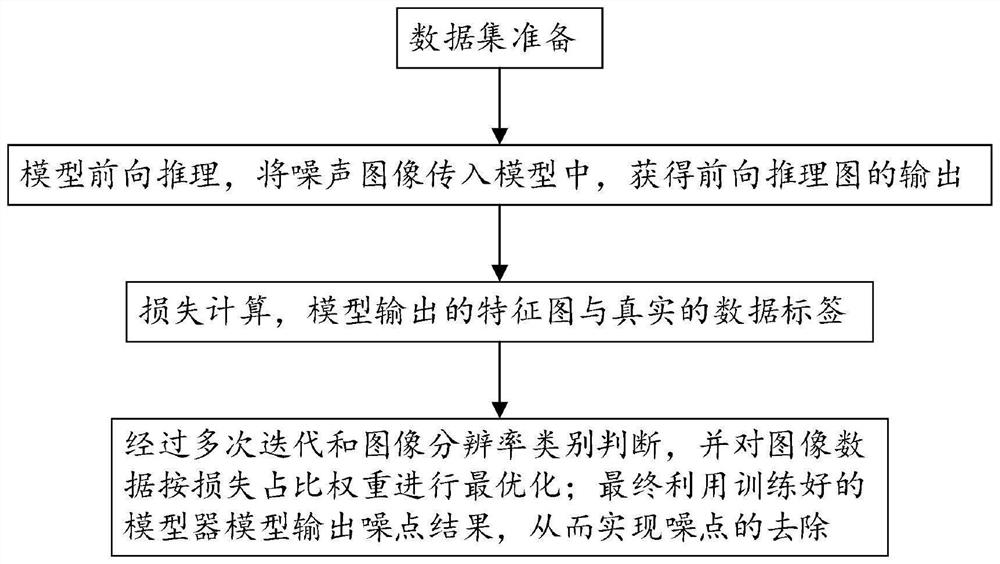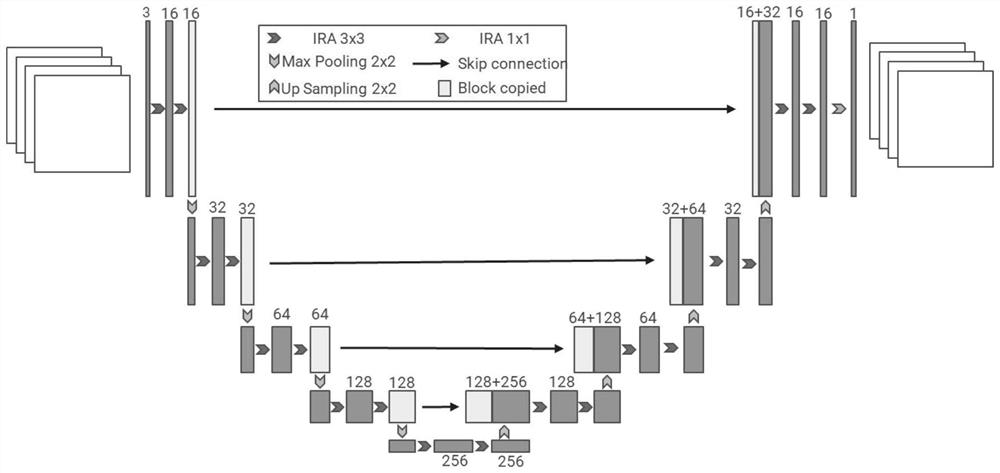Rock core CT image denoising method based on deep learning
A technology of deep learning and CT images, applied in neural learning methods, image enhancement, image data processing, etc., can solve the problems that the pore structure cannot be accurately described, and the core is difficult to reflect the real situation of the actual core.
- Summary
- Abstract
- Description
- Claims
- Application Information
AI Technical Summary
Problems solved by technology
Method used
Image
Examples
Embodiment 1
[0059] like figure 1 As shown, this embodiment provides a deep learning-based core CT image denoising method, which includes the following steps:
[0060] 1. Data set preparation; visualize the CT of the core by 3D digitization of the core; add random noise to the core, use the slicing method to obtain a single image of the core, and obtain the standard 128*128 by adding salt and pepper and Gaussian white noise The noise map and the corresponding standard original image, the noise point is marked as 1, the original image is marked as 0, and the complete data set is obtained by grouping by naming; then the data set is divided into training set: test set: validation set = 7 : 2:1, so far, the data preparation phase is completed.
[0061] 2. Model forward inference, pass the noise image into the model, and obtain the output of the forward inference graph;
[0062] The model proceeds as follows:
[0063] a) The format of the input image Imagegt is (N, C, H, W), which represent ...
PUM
 Login to View More
Login to View More Abstract
Description
Claims
Application Information
 Login to View More
Login to View More - R&D
- Intellectual Property
- Life Sciences
- Materials
- Tech Scout
- Unparalleled Data Quality
- Higher Quality Content
- 60% Fewer Hallucinations
Browse by: Latest US Patents, China's latest patents, Technical Efficacy Thesaurus, Application Domain, Technology Topic, Popular Technical Reports.
© 2025 PatSnap. All rights reserved.Legal|Privacy policy|Modern Slavery Act Transparency Statement|Sitemap|About US| Contact US: help@patsnap.com



